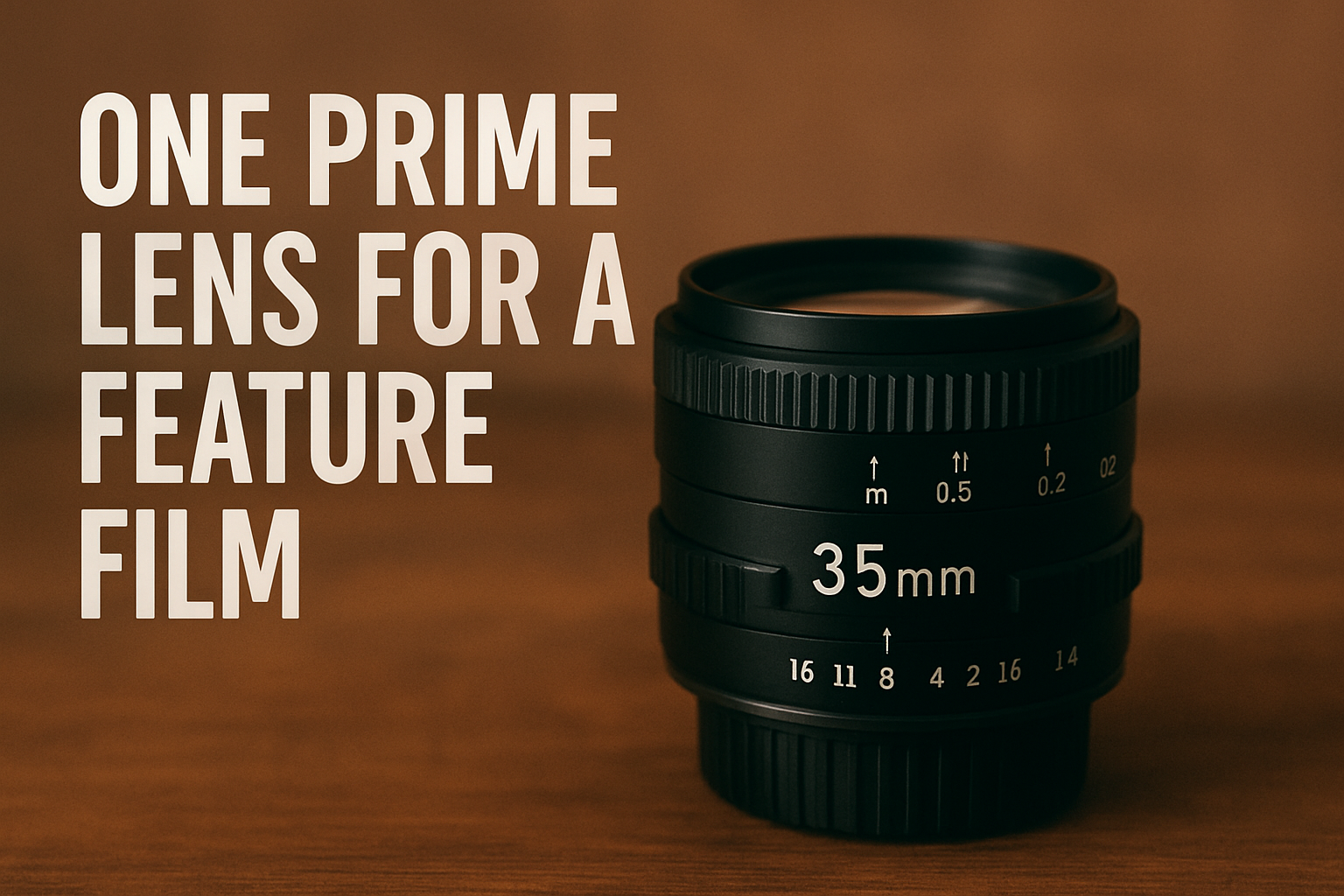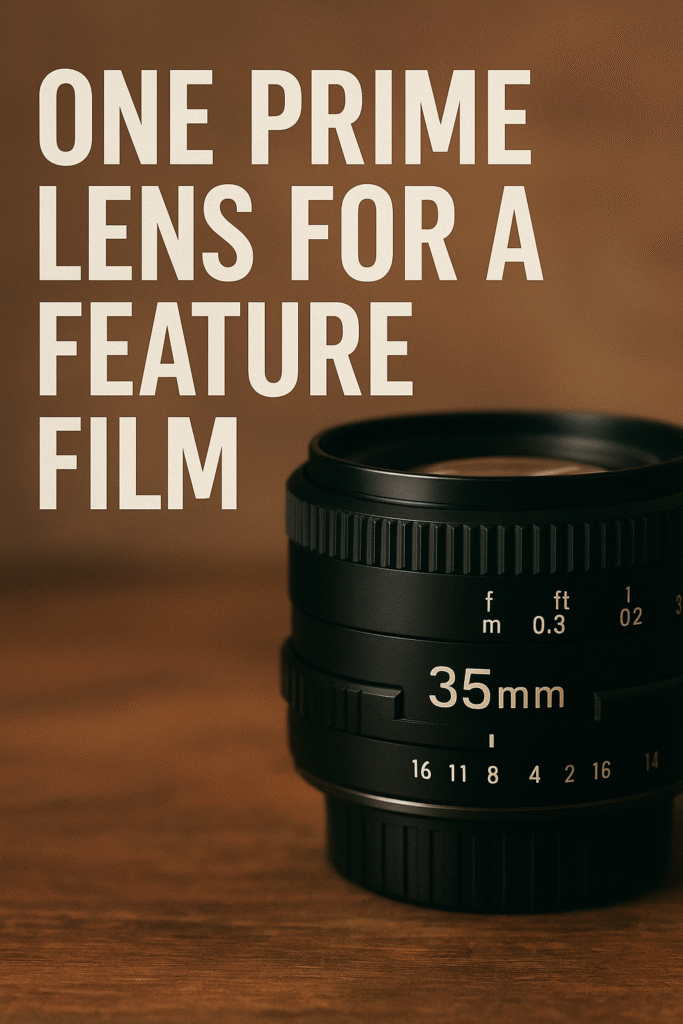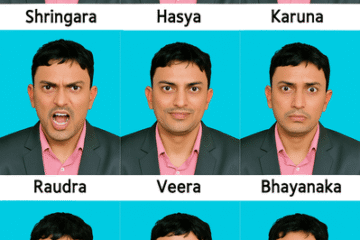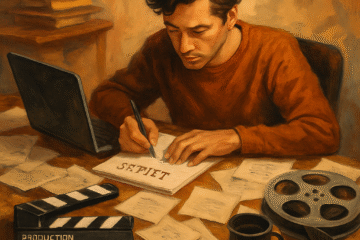The “One Lens Film” Concept

Technically, you can shoot an entire feature film with a single prime lens, and many filmmakers have done so deliberately. The choice depends on what kind of visual storytelling grammar you want to commit to. This article will explain you regarding The “One Lens Film” Concept for Independent Filmmakers.
The “One Lens Film” Concept
- Using a single focal length creates visual consistency — every shot feels like it belongs to the same world.
- It forces you (and your crew) to move the camera, rethink blocking, and be inventive with composition.
- Audiences may not consciously notice, but they’ll feel a cohesive perspective running through the film.

Classic Choices
- 35mm (Full-Frame) – The Sweet Spot
- Widely considered the most versatile single focal length.
- Naturalistic field of view: close to human vision but with a bit of cinematic width.
- Good for wide shots, but you can still step closer for intimate close-ups without distortion getting too distracting.
- Examples: Roma (Cuarón), Frances Ha (Baumbach).
- 50mm (Full-Frame) – The Neutral Eye
- True “normal lens” — closest to human perspective in terms of distortion.
- Excellent for dialogue, portraits, and controlled spaces.
- Can feel restrictive in cramped locations where you can’t step back enough.
- Famous one-lens films: The Celebration (Vinterberg, Dogme 95), Chungking Express used a ton of 50mm work.
- 28mm (Full-Frame) – For Energy & Environment
- Slightly wider, gives a sense of place while still allowing strong character presence.
- Works great if you want kinetic blocking and movement (think handheld or dynamic dolly shots).
- Example: Son of Saul (shot almost entirely on 28mm).
Things to Consider
- Format / Sensor Size – A 35mm on full-frame looks very different from a 35mm on Super 35 or Micro Four Thirds. Equivalent field of view matters.
- Story World – A chamber drama with lots of intimacy might suit a 50mm; a city-spanning story might need the wider reach of 28mm or 35mm.
- Practical Constraints – Shooting in small apartments? 50mm will box you in. Shooting landscapes? 28mm or 35mm keeps breath.
✅ If I had to pick one universally sufficient prime lens for a feature, I’d recommend a 35mm (full-frame).
It gives you coverage flexibility, avoids heavy distortion, and has enough intimacy for faces while still letting you show environments.


0 टिप्पणियाँ